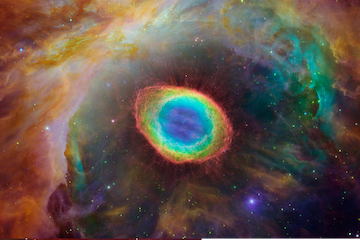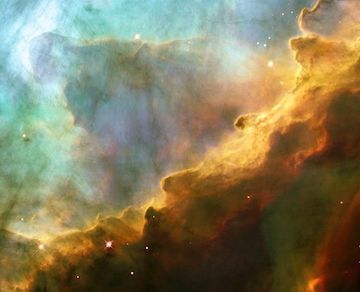The Ten Stages of the Mahayana Bodhisattva Path
The Third Stage
Part 5

Stages of the Mahayana Bodhisattva Path are similar to the Theravada idea of the Noble Eight-fold Path, although not the same in the order of the stages, as well as the aim of the various stages that comprise the total trajectory that the Bodhisattva has to traverse. The idea of the Bodhisattva path is linked to the idea of bodhicitta, the aspiration of becoming enlightened, and this aim is for the benefit of all sentient beings—when compared to the Arahant idea it is distinguished by the fact, that the Bodhisattva holds off on attaining final non-returning Nirvana until all sentient beings are brought along the journey of the Bodhisattva path towards enlightenment.

Various Mahayana texts discuss the stages of the path in varying detail and order. For this fifth article in the series, I’ve mainly followed the stages of the Path as explained in the Dasa Bhumika Sutra. Dasa bhumika in Sanskrit means ten stages. Prior to these ten stages, and similar to how the Theravada Eight-fold Path had the gotrabhu (becoming of the lineage), some texts define two preliminary stages that were explained in Part 1 of this series. I’ve also consulted the abhidharmsamuccaya text of Asanga and the prajna-paramita abhi-samaya-lankara, that provide additional information for the stages, as well as the Mahayana-sutralamkara text. For cross-reference purposes I’ve used the yogacarabhumi text, which incorporates the bodhisattva stages into an even greater 17 stages, to verify Sanskrit terminology.
In this article, I’ll cover the third stage of the 10 Stages of the Mahayana Bodhisattva Path.

Stage 3. The stage of Illumination (Prabhakari bhumi)

The third stage is called Illumination, because the Bodhisattva’s lucid perfection of patience and tolerance (ksanti paramita) where rage and anger have subsided. The Bodhisattva has completed the four meditative absorptions (dhyana) and the four immeasurable qualities (apramana) [loving kindness, sympathetic joy, compassion, equanimity] and attained the five supernormal knowledges (abhijna). The Bodhisattva is now free from lust (raga), anger (dvesa) and delusion (moha).

A Bodhisattva, who practiced and attained the second stage, now aims for the third stage, where one develops these ten intentions of the mind: purity, steadfast, aversion to the world [of suffering], unattached, forsaking [final Nirvana], firm, energized, insatiable, subliminal, and greatness.
- The mind intention of purity means to cleanse the mind from unwholesome attachments to internal and external hindrances.
- The mind intention of steadfast means to apply urgency and dedication to one’s practice.
- The mind intention of aversion to the world [of suffering] means to consider the material world as not pleasant and something to not cling to.
- The mind intention of unattached means to not attach to either the material world of suffering nor the mere apprehension of Nirvana alone.
- The mind intention of forsaking final Nirvana means to come back into rebirth to continue the Bodhisattva work to help others sentient beings reach Enlightenment.
- The mind intention of firm requires a strong intention in practice without distractions.
- The mind intention of energized means enthusiasm and willingness to continue the Bodhisattva stage.
- The mind intention of insatiable shows the eagerness and desire applied to in meditation and helping others.
- The mind intention of subliminal means to have an exalted mind.
- The mind intention of greatness means to have a pure and virtuous mind.
When these mind intentions are well developed and come to fruition, the Bodhisattva establishes oneself in the third stage.

One of the realizations of the Bodhisattva that is encountered during this stage, is that name-labels that are perceived as real and material forms that are experienced as solid—are impermanent, are suffering, are impermanent and subject to arising and ceasing, have no discoverable start nor end, are mere transformations—and are subject to what the Buddha teaches as the doctrine of dependent origination. The Bodhisattva sees, with clarity and vision, the resulting effects of suffering and delusion when one’s perception of name-and-forms lead to attachment to conditioned reality. As an antidote, the Bodhisattva visualizes and practices the attainment of ‘seeing the Buddha’, and absorb it’s qualities that are immeasurable and surpassing suffering.

Along the path in this stage, the Bodhisattva continues to help other sentient beings and aim for their highest possible positive outcome in their spiritual journey. One of the direct ways to do this, is to teach the Dharma to them, and ensure that as many as possible feel the benefit from hearing the Dharma, seeing the Dharma in action through the Bodhisattva, and realizing the Dharma for oneself.

In this stage, the Bodhisattva fully develops and completes the fruits of the following intentions: patience and gentleness, unhindered tenderness, cannot be disturbed by outside factors [e.g., getting angry], without agitation or getting upset, not seeking pleasure or fame, not looking for material rewards, free from deceit, and not grasping at objects and imagined realities.

Out of the qualities to bring people onto the Mahayana path, the Bodhisattva sees great improvement in the quality of one’s actions that benefit others.
The prajna-paramita abhi-samaya-lankara text adds five items that a Bodhisattva should develop in a resolute fashion:
In the next article, I’ll be discussing The Fourth Stage of the Mahayana Bodhisattva Path in full detail.

I will flag comment spam at 1% strength. If you keep on spamming my post, I will flag you at 100%. I don't care if you have limited English abilities, write a couple of sentences about this article, no copy-paste, please. I will flag: one sentence comments, links to your blog and begging for up-votes and follows. Also, I will flag comments that have nothing to do with my blog's article. I will also check your comment section to see if you have been comment spamming on other blogs.


 A link to My Blog
A link to My Blog
I have been missing soo much like this, just realized you have post 1and2 stages of mahayayana Bodhisattva.
Well I'm glad I came across this, as I always like meditation. It helps my retention memory. Though I haven't heard much about the ten stages of Mahayana Bodhisattva but I will gladly like to go back to your former post to take those lectures from the beginning.
Thanks for sharing, and thanks for your motivation always
Reading about this stuff is like reading about apples having never ate one....hahaha Remember I am not a Bodhisattva...so you and I are in the same boat!
You get get a taste of these mind states through practicing meditation and integrating insights gleaned from meditation into your daily life.
As I understand it, the fact is that when you come to total control of yourself, there is the possibility of becoming pure positive radiant energy, but to get to that state, where is the human essence? if you disconnect from the world, where are the relationships with others? I would conclude, that it becomes a lonely life with itself.
@amigoponic there is no self to be found in the flux of the body state, it is constantly changing. One has to see this to understand the path of the Bodhisattva, this is like the first step, self cannot be found in what is constantly changing and empty of a permanent self, like what people think is a soul. Regarding the essence of a human the soul per Hindu view is denied.
8. Especially emphasized in Mahayana Buddhism, all sentient beings have Buddha Nature/ Essence. One can become a Buddha (a supreme enlightened being) in due course if one practises diligently and attains purity of mind (ie absolutely no delusions or afflictions).
11. Rebirth is another key doctrine in Buddhism and it goes hand in hand with karma. There is a subtle difference between rebirth and reincarnation as expounded in Hinduism. Buddhism rejects the theory of a transmigrating permanent soul, whether created by a god or emanating from a divine essence.
Major Differences
Yes, I understand perfectly; but I am a social being, I like to be in everything and with everyone, and in this sense, I imagine the life of a Buddha as solitary, passive, individual. I'm sorry if I'm wrong about my statement.
Thanks for the link, you've cleared up a lot of doubts.
No need to feel bad @amigoponc, your question was awesome! The answer and question help people understand what Buddhism is and is not.
If everyone in the world could learn to be aspired to becoming this , then some many unfavorable happenings as you’ve mentioned in the comment of your previous, all will be limited or eliminated .
And this is exactly what we need. This are what we need in our society today, Buddhism is relating and teaching life the way it should be lived of course
Buddhism is more like a way of life to me, it’s deep knowledge of life and good human spirit would definitely make a lot of people better , making the world a better place. Thanks for another deep learning experience tonight, you’re always appreciated
We all can work on these qualities no matter who we are, how rich or poor we are, or how young or old we are, well said and I agree @olumideolowoyeye
Yeah, in one of my songs , I preached about the importance of being together, working together in love and harmony. If all of these qualities are present, I imagine what the world would be. Thanks now and always @reddust
OMG, I will have to check out your song, do you have a link @olumideolowoyeye? Please share, it will complement my post.
Yeah I have a SoundCloud link to it and I think I also have the dsound link.
It’s not of the greatest quality as I can proudly say I did recorded it and many others on my phone. I will share the link { It’s reggae }
Dsound Link
https://dsound.audio/#!/@olumideolowoyeye/20180319t183923418z-love-gospel
Sound cloud Link
https://soundcloud.com/olumide-olowoyeye/love
Proof Of Work
Note : This is unprofessional recording done on phone
I don't know what would I do without meditation. Probably my brain would explode from all unnecessary emotions and thoughts.
Especially with my neighbours and their annoying reconstruction eh.
I think these stages should be well observed some looks alike. The third stage (illumination) stage is differ.
There are differences regarding attainments through these stages, but you just don't attain these stages like taking test. You go through one stage over and over again until the fruit of the stage has grown ripe and sweet and then the next stage starts.
Thanks for the enlightenment sir
This third stage showed that the Mahayana Bodhisattva already shows perfection in patience and tolerance, I'll wait for the next trip
If you are going to walk the Bodhisattva path you are going to need patience, it takes many, many life times to perfect...hahaha Thank you @hermanic
true, patience and tolerance is perfect, but in my opinion, I have not been able to follow in his footsteps .... because I don't have the patience that is perfect ... hahahah
Patience is like a muscle, you need to work out more @hermanic :p
I have never heard about these 10 stages, but I am very interested in the subject of meditation. I'm really grateful to you for your contribution. I hope to read more
I found out some unknown information from this post.
Thank you very much for share.
you say this is indeed very true friend, I really like people like you, may my friends always success always
I a few days ago watched a movie about the life of a monk (I forget the title), a hermit who teaches compassion, a little talk, and also a bit of a meal, his heart full of tenderness and love.
He raised two students to be taught martial arts, taught the purpose of life, every day the teacher asked the students "why are you studying martial arts?". the student replied "for revenge", monk hit second, told them to meditate again, this incident repeatedly, until so many years later the patient again asked the same question, then the two students replied "to spread goodness, destroy evil, forgive without revenge ". that is when the two disciples are released to return to life in the midst of society.
I do not know how the ascetic is to what extent, but truly amazing, his teachings are purely out of goodness.